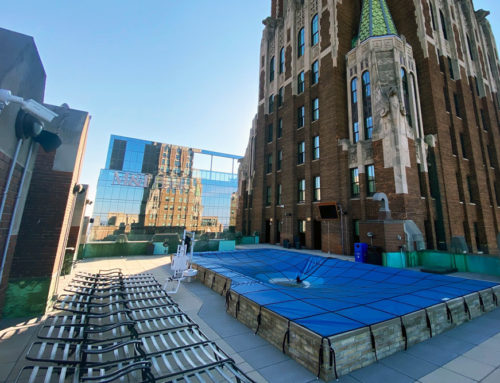Park and recreation departments across the U.S. provide an important service. Maintenance of their facilities, including usable hiking trails and local pool management, allows people to enjoy the outdoors and engage in physical activity as part of a healthy lifestyle.
In theory, swimming pools can remain open all year long. However, not all parks have the budgetary resources to remain open for this amount of time, but as one letter to the editor of Washington state’s Vashon-Maury Island Beachcomber pointed out, the public served by these facilities would be very grateful.
Children learn life-saving skills
In his letter, Vashon-Maury Island resident Mark Nassutti, member of the Friends of Vashon Pool, praised the Vashon Park District for considering budget modifications that would keep the Vashon Pool open for an extra four weeks during the 2015 swimming season. This schedule would extend the season beyond the summer in a manner that would overlap with the local school calendar, which presents an opportunity to create after-school programs focused on physical education and academics. This commitment costs about $10,000, out of a yearly departmental budget of $1.3 million.
“Our long-term goal – a year-round pool – is something Vashon has wanted for decades,” Nassutti wrote. “And we need it: Swimming is the only sport that if you don’t know how to do it, you could die – and we live on an island … In 2014, the pool served 1,250 unique users in 10 weeks. Year-round pool operation with a removable roof could reach one in three Vashon residents: Toddlers being introduced to water, schoolchildren learning to swim, swim teams, lifeguard training, water aerobics, lap swimming, safe exercise for the physically impaired and, of course, good old fashioned swimming pool fun.”
The Friends of Vashon Pool hope that the $10,000 budget consideration for an extra four weeks of operation is just one step toward realizing the ultimate goal of year-round operation.
Swimming promotes aerobic well-being
Nassutti wasn’t overstating the importance of swimming to public health. According to the U.S. Centers for Disease Control and Prevention, children and adolescents need to engage in at least 60 minutes of physical activity a day. Children should devote at least three days a week to vigorous-intensity aerobic activity. These types of exercises make the heart and lungs work harder to deliver blood and oxygen around the body. Meanwhile, adults need to engage in 150 minutes of moderate-intensity or 75 minutes of vigorous-intensity activity per week.
The CDC cited water aerobics as a form of moderate-intensity aerobic activity. In contrast, lap swimming is an example of vigorous-intensity physical activity.
Experts at the federal agency listed several medical benefits to a lifestyle that includes ample amounts of exercise. Among them are better weight control, improvements in mental health and mood, stronger bones and muscles, and reductions in the risk of cardiovascular disease, Type 2 diabetes and cancer – all of which are possible benefits of operating a pool beyond the typical swimming season.
Any public pool that is considering extending its swimming season should remember to comply with local health departments’ standards for water sanitation.






